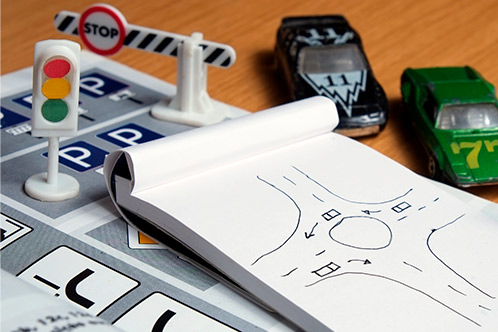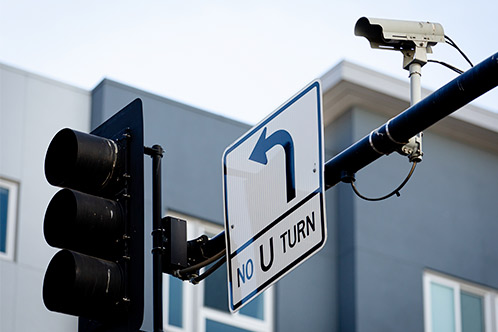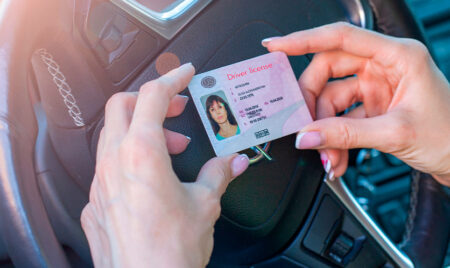U-Turn Laws in Texas: What New Drivers Need to Know
Mastering the art of making U-turns is an essential maneuver for all drivers that requires a proper understanding of state regulations. Many drivers experience confusion about Texas U-turn laws, which can lead to dangerous situations on the road.
While U-turns are generally legal in Texas and provide a quick way to change direction, they’re also notorious for causing numerous accidents when executed improperly. As a new driver, understanding these laws is essential not only for your safety but also for successfully obtaining your license
Knowledge of U-turn Regulations

- Knowledge of U-turn laws is essential for passing the Texas Department of Public Safety (DPS) examination, which requires a minimum 70% score
- Proper U-turn execution prevents accidents and clarifies liability in collision scenarios
- Different cities in Texas may have their own U-turn ordinances that supersede state regulations
The Texas DPS establishes and enforces these regulations to ensure that all drivers understand proper U-turn procedures. Their comprehensive testing evaluates your knowledge of these traffic laws, serving as the gateway to responsible driving privileges. For new drivers, especially, this knowledge isn’t just about passing a test; it’s about developing lifelong safe driving habits on Texas roads.
Texas U-Turn Laws Explained
Making a U-turn may seem simple, but in Texas, it comes with specific rules that every driver needs to understand. Many restrictions apply to making a U-turn depending on location, signage, and visibility. Knowing when a U-turn is safe and when it’s prohibited can help drivers avoid accidents, tickets, and costly mistakes. Below is a breakdown of the key regulations you should know.
- Definition of a U-turn: A U-turn is a driving maneuver where a vehicle makes a 180-degree turn to proceed in the opposite direction. In Texas, this maneuver is generally legal but subject to specific regulations.
- Where U-turns are permitted: In most Texas jurisdictions, U-turns are allowed when:o You’re in the far-left lane
o You have clear visibility of at least 500 feet in the direction of approaching traffic
o There are no signs prohibiting the maneuver
o You yield to oncoming traffic and comply with traffic signals
- Where U-turns are prohibited: U-turns are illegal in Texas when:o Signs specifically prohibit them
o At railroad crossings or fire stations
o When visibility is less than 500 feet
o On one-way streets
o When there isn’t sufficient space to complete the maneuver safely
- U-turn signage: The Texas Transportation Commission and local authorities can place official traffic control devices that prohibit U-turns at specific intersections. Always watch for “No U-turn” signs, which feature a red circle with a U-turn arrow crossed out.
- Local ordinance variations: Municipal regulations may differ from state law. For example, in Texas City, U-turns are only permitted at intersections where there is no traffic light present. As a new driver, always research local traffic ordinances for the areas where you’ll be driving.
Safe vs. Illegal U-Turns: DPS Regulations and Examples

DPS Guidelines for Safe U-Turns
The Texas Department of Public Safety outlines specific steps drivers should follow to keep U-turns safe and predictable. These best practices help minimize risks and ensure compliance with state driving laws:
- Always position your vehicle in the far-left lane before attempting a U-turn
- Ensure you have a clear view of at least 500 feet in the direction of approaching traffic
- Yield to all oncoming traffic and pedestrians
- Comply with all traffic signals and signs
- Use your turn signal to indicate your intention
- Be cautious of drivers turning right on red lights if you’re making a U-turn on a green light
Examples of Legal U-Turns
Not every U-turn is against the law. In fact, Texas law clearly identifies situations where the maneuver is safe and permissible. Common examples include:
- At an intersection without a traffic light where U-turns aren’t prohibited by signage
- When visibility extends at least 500 feet in the direction of oncoming traffic
- At designated U-turn lanes, often found in highway medians
- At Restricted Crossing U-Turn (RCUT) intersections, which are specifically designed for safe U-turns
Examples of Illegal U-Turns
Certain conditions and locations make U-turns unsafe or unlawful. Drivers should avoid the following scenarios, which can lead to tickets or accidents:
- At intersections where traffic lights are present (in some municipalities)
- Where signs explicitly prohibit U-turns
- When visibility is less than 500 feet due to hills, curves, or weather conditions
- At railroad crossings or near fire stations
- On one-way streets
- Across double yellow lines (in most circumstances)
Consequences of Illegal U-Turns
Failing to follow Texas U-turn laws can have more than just financial repercussions. From fines to higher insurance rates, here are the most common outcomes of making an illegal U-turn:
- Traffic fines range from $75 to $200, depending on the municipality
- Points added to your driving record, potentially increasing insurance premiums
- Increased risk of accidents – unsafe U-turns are a common cause of side-impact collisions
- Possible liability in accidents following the modified comparative fault doctrine in Texas
License Requirements for Making U-Turns in Texas

- Age-Based Requirements: While you can obtain a provisional certificate at 16, you must wait until 18 for a full Texas driver’s license. Drivers aged 18-24 must complete a mandatory 6-hour Texas Adult Driver Education Course before obtaining a license that permits unrestricted U-turns.
- Learner’s Permit Restrictions: Drivers with learner’s permits must have a licensed adult (at least 21 years old) in the passenger seat when practicing U-turns. These drivers should focus on mastering the basics of safe U-turns in low-traffic areas before attempting them in busier settings.
- Provisional License Limitations: Drivers with provisional licenses (ages 16-17) may face additional restrictions on when they can perform U-turns, especially during nighttime hours. Always check local ordinances, as they may have additional restrictions beyond state law.
- Practice Tips for New Drivers: When practicing U-turns as a new driver, start in empty parking lots or quiet residential streets with wide medians. Always signal your intentions, check for approaching traffic from all directions, and make the turn slowly with full awareness of your vehicle’s turning radius.
As you learn to navigate the road, Driving Quest is here to help you master Texas driving laws, including tricky U-turns. Whether you’re a new driver or need a refresher, our Texas Adult Driving Course is your key to understanding the ins and outs of road safety and legal requirements.
With interactive lessons and a 98% passing rate, you’ll gain the skills and confidence to pass your DPS test and drive safely. Contact us today and start your journey toward driving safely and independently!
FAQs
Q: Can I make a U-turn at any intersection in Texas?
A: No. In most Texas cities, U-turns are only allowed at intersections without traffic lights. However, local ordinances vary, so always check for prohibitory signs before making a U-turn.
Q: If there’s a gap in a double yellow line, can I make a U-turn there?
A: Only if it’s at an intersection where U-turns are permitted and you have clear visibility of at least 500 feet.
Q: How do I handle a Restricted Crossing U-Turn (RCUT) intersection?
A: At an RCUT, first turn right onto the main road, then change lanes to reach the median crossover, follow traffic controls to make your U-turn, and then either turn right at the upcoming cross street or continue straight.
Q: Who has the right-of-way when I’m making a U-turn?
A: You must yield to all oncoming traffic, including vehicles turning right on red. The U-turning vehicle rarely has the right-of-way.
Q: Can I be found at fault if someone hits me while I’m making a legal U-turn?
A: Possibly. Texas follows a modified comparative fault doctrine, meaning liability can be shared. Even if your U-turn was legal, if you didn’t exercise proper caution, you might be partially responsible for the accident




